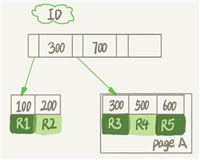在 mysql 中,多列 in 查询是一种强大的筛选工具,它允许通过多字段组合快速过滤数据。相较于传统的 or 连接多个条件,这种语法更简洁高效,尤其适合批量匹配复合键或联合字段的场景。本文将深入解析其用法,并探讨性能优化与实战技巧。
一、基础语法:多列 in 的两种写法
1. 直接值列表
-- 查询 (name, age, role) 匹配任意一组值的记录
select * from users
where (name, age, role) in (
('jinzhu', 18, 'admin'),
('jinzhu2', 19, 'user')
);2. 子查询
-- 查询与指定订单相关的用户
select * from users
where (name, email) in (
select customer_name, customer_email
from orders
where status = 'paid'
);二、对比传统 or 的写法
假设需要匹配三组值,传统写法冗长且难以维护:
select * from users where (name = 'jinzhu' and age = 18 and role = 'admin') or (name = 'jinzhu2' and age = 19 and role = 'user');
多列 in 的优势:
• 简洁性:条件组集中管理
• 可读性:直观表达“多字段组合匹配”
• 性能:数据库可能优化执行计划
三、性能分析与优化
1. 索引利用
• 若 (name, age, role) 是联合索引,查询效率最高。
• 单列索引可能无法生效,需结合执行计划(explain)分析。
2. 数据量影响
• 小数据量(如 < 1000 组):多列 in 效率优异。
• 大数据量:考虑分页或临时表优化:
-- 使用临时表
create temporary table tmp_filters (name varchar(255), age int, role varchar(255));
insert into tmp_filters values ('jinzhu', 18, 'admin'), ('jinzhu2', 19, 'user');
select u.*
from users u
join tmp_filters f on u.name = f.name and u.age = f.age and u.role = f.role;3. 分批次查询
-- 每批最多 100 组条件(示例使用伪代码逻辑)
select * from users
where (name, age, role) in (('jinzhu',18,'admin'), ... /* 100组 */);
-- 下一批次
select * from users
where (name, age, role) in (('jinzhu101',20,'user'), ...);四、兼容性与注意事项
1. 数据库支持
• mysql:全支持
• postgresql:语法相同
• sqlite:3.15+ 版本支持
• sql server:需转换为 where exists 子查询:
select * from users u
where exists (
select 1
from (values ('jinzhu',18,'admin'), ('jinzhu2',19,'user')) as t(name, age, role)
where u.name = t.name and u.age = t.age and u.role = t.role
);2. 常见错误
• 占位符数量限制:mysql 的 max_prepared_stmt_count 限制,需分批处理。
• 字段顺序:必须与 in 子句中的字段顺序一致。
• null 值处理:(col1, col2) in ((1, null)) 可能不如预期。
五、动态生成条件(通用编程示例)
1. 参数化查询(防止 sql 注入)
以 python 为例(语言无关逻辑):
filters = [('jinzhu', 18, 'admin'), ('jinzhu2', 19, 'user')]
placeholders = ', '.join(['(%s, %s, %s)'] * len(filters))
query = f"""
select * from users
where (name, age, role) in ({placeholders})
"""
# 展开参数:flattened = [x for tpl in filters for x in tpl]
cursor.execute(query, flattened)2. 命名参数(增强可读性)
-- 使用命名参数(需数据库驱动支持,如 postgresql) select * from users where (name, age, role) in %(filters)s;
六、最佳实践总结
优先使用联合索引
确保(col1, col2, col3)的查询顺序与索引一致。控制条件组数量
单次查询避免超过 1000 组值。监控执行计划
定期用explain验证索引使用情况:explain select * from users where (name, age, role) in (...);
避免全表扫描
若未命中索引,考虑优化查询条件或数据结构。事务中谨慎使用
长时间持有锁可能导致并发问题。
七、高级技巧:与其他操作结合
1. 联合 join 查询
select u.*, o.order_id
from users u
join (
values ('jinzhu', 18, 'admin'), ('jinzhu2', 19, 'user')
) as filter(name, age, role)
on u.name = filter.name and u.age = filter.age and u.role = filter.role
left join orders o on u.id = o.user_id;2. 与 case 语句结合
select
name,
case
when (name, age, role) in (('jinzhu',18,'admin')) then 'vip'
else 'standard'
end as user_type
from users;通过合理利用多列 in 查询,可以显著简化复杂条件的代码逻辑,同时兼顾性能与可维护性。无论是简单的批量筛选还是联合业务键校验,这种语法都能成为你 sql 工具箱中的利器。
到此这篇关于mysql 多列 in 查询详解:语法、性能与实战技巧的文章就介绍到这了,更多相关mysql 多列 in查询内容请搜索代码网以前的文章或继续浏览下面的相关文章希望大家以后多多支持代码网!






发表评论